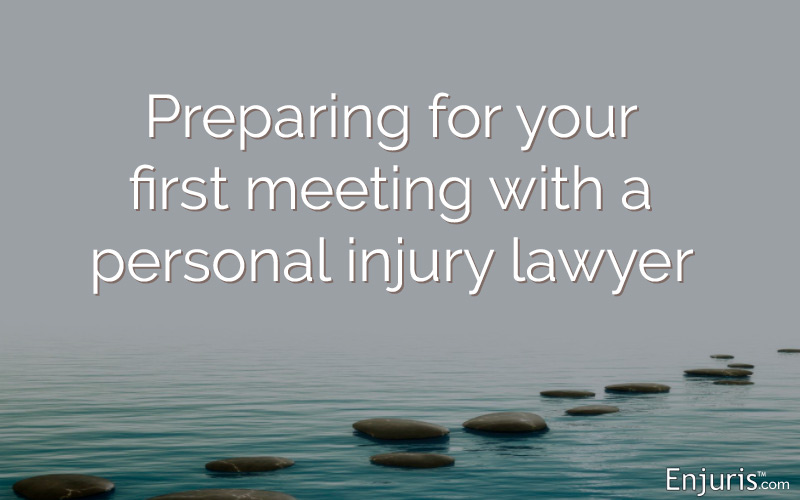How to file a claim for a defective product in Colorado courts
This type of law is called “defective products,” also known as “products liability.” This area of law can get confusing because it branches off into three categories, and much of it depends on the manufacturer’s state of mind when the product was designed.
Products liability law also examines supply chain management, which can stretch across multiple companies, and through various states and countries – depending on how many companies worked together on the end product.
Let’s look at Colorado.
Products liability in Colorado
In Colorado, courts use one of two theories to analyze what happened in a defective product case: a negligence theory or a product liability theory, the latter of which is also referred to as “strict products liability.” This means that the person’s intent does not matter, as long as the plaintiff can prove that the product was defective.
We discussed negligence in this article. Products liability, on the other hand, tends to fall into one of three categories, each of which takes the manufacturer’s conduct into account.

Damages worksheet to track expenses for your injury claim (medical treatment, property damage, lost wages, prescriptions)
Download in PDF format
Failure to warn
These are also called “marketing defects” and focus on actions in the supply chain. The product was properly designed, but it was not accompanied by the correct instructions or warnings. This lack of warnings made the product unreasonably dangerous to its intended consumers.
Failure to warn issues might include some of the following:
- A medication that causes serious side effects if not taken with a full glass of water;
- A child’s chair meant to clamp on to a table that falls if not installed correctly; or
- A saw that causes serious injury if a person’s hand is in the wrong place.
Design defects
This is intended on the part of the manufacturer, because even if it was made flawlessly, it can still endanger the end user. A product can be considered unreasonably dangerous if it does not perform as safely as reasonably expected when a consumer uses it in its intended manner.
Some design defect case examples include the following:
- A small toy that can be swallowed by a child;
- A car that can accelerate suddenly on its own; or
- A gun safety that still allows the gun to be fired.
Manufacturing defect
Even if the product were designed to be safe, the end result that left the facility was not in harmony with that design. If that end product then causes an injury to its intended user, the manufacturer can be held responsible.
Manufacturing issues might include the following:
- Tread lines on tires;
- A faulty lock on a car door; or
- A safety buckle on a car seat.
Tweet this
Colorado products claims process
The Colorado statute of limitations for a product liability or defective product claim is two years from the date of injury, death or property damage, according to Colorado Revised Statutes Section 13-80-106. There is also a rebuttable presumption that if 10 years have passed since the product has been sold, then the product was not defective at the time it was sold.
Although the statute of limitations is definitely strict in the state of Colorado, there are some exceptions – they do follow the Discovery Rule, for instance.
Product liability damage caps in Colorado
Colorado state law follows a theory of pure comparative negligence.
This means that a plaintiff can still seek compensation under the justice system against a manufacturer, but their award may be reduced by his or her own degree of fault. So, for instance, if a jury awards a plaintiff $1 million but finds him to be 30% at fault, the plaintiff would receive $700,000.
Colorado also follows the economic loss rule, a judicially created doctrine that came about in Loughridge v. Goodyear Tire & Rubber Co., which was intended to maintain clear boundaries between contract and tort law. Tort law, to remind the readers, is intended to protect individuals from physical harm to themselves or their property.
Contract law exists to enforce parties’ expectations and allocate risks during bargaining. So, the economic loss rule states that if a contract existed between the parties and the only damage was to the product itself, the plaintiff may not seek compensation.
What to look for in a Colorado defective product liability attorney
Make sure to look for an attorney who makes you feel comfortable, who puts your needs first and who devotes the necessary time to your case. Read lots of reviews and ask people who have used product liability attorneys before.

Worksheet with questions to ask a personal injury attorney to help determine if he or she will be a good fit for your case
Download in PDF format
If you need someone to help you through this trying process, read some of the resources below and speak with some of Enjuris’ Colorado attorneys, who are well practiced in this area. They will be able to assist you.
Common defenses by suppliers and manufacturers of defective products
Because defective products and product liability claims can become very pricey for manufacturers, they will do everything in their power to stop them before they gain any traction. Speaking to a personal injury attorney who is well versed in defective product claims would be a good start.
- One main defense they will use is that the plaintiff has not correctly identified the proper manufacturer that created the product that hurt him. The plaintiff has to tie the product to the right company in order to receive damages. This is where supply chain management comes into light.
- Another defense is that the plaintiff somehow changed the product after acquiring it, which led to the injury. This would negate the manufacturer’s responsibilities because the plaintiff broke the supply chain.
- A third defense is that the plaintiff assumed the risk of using a defective product – meaning they knew it was defective, and then they decided to use it anyway.
Symptoms of Metallosis, or Metal Poisoning, from Hip Surgery
What if the hip implant you so desperately needed actually does you harm? What if, after a little while, you notice that the surgical site is swollen, that movement hurts, that something feels wrong deep inside?
Metal-on-metal implants are notorious for the problems they create and have been the subject of numerous product recalls. Read more


















